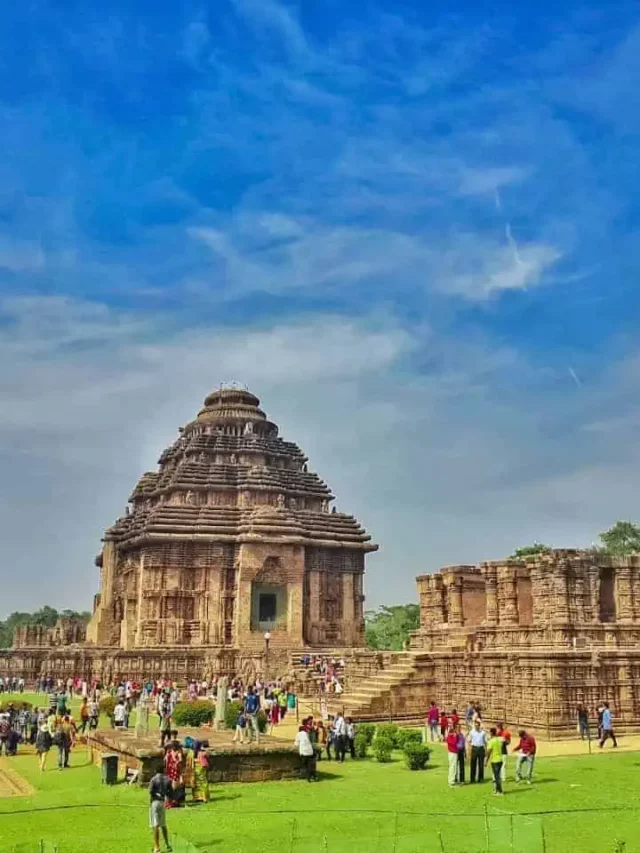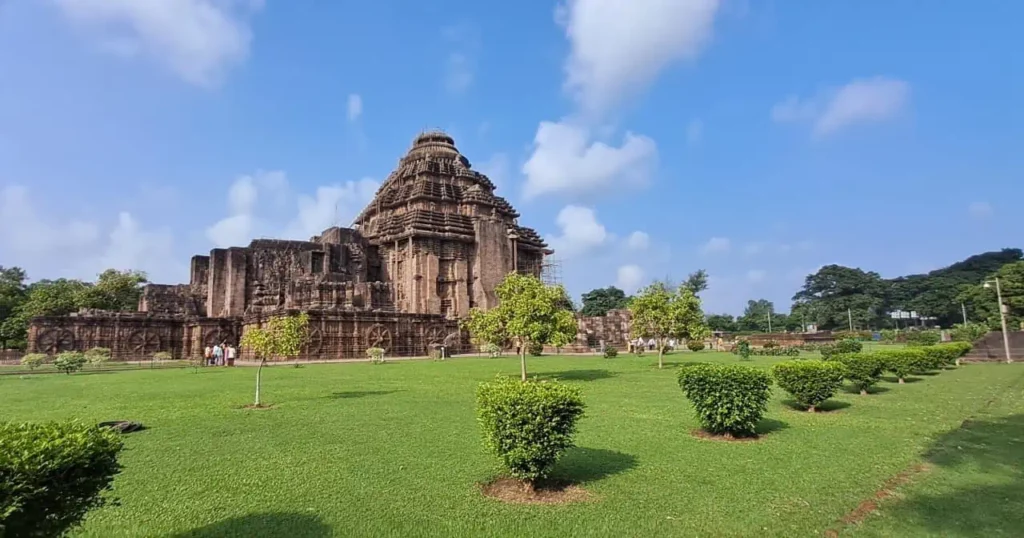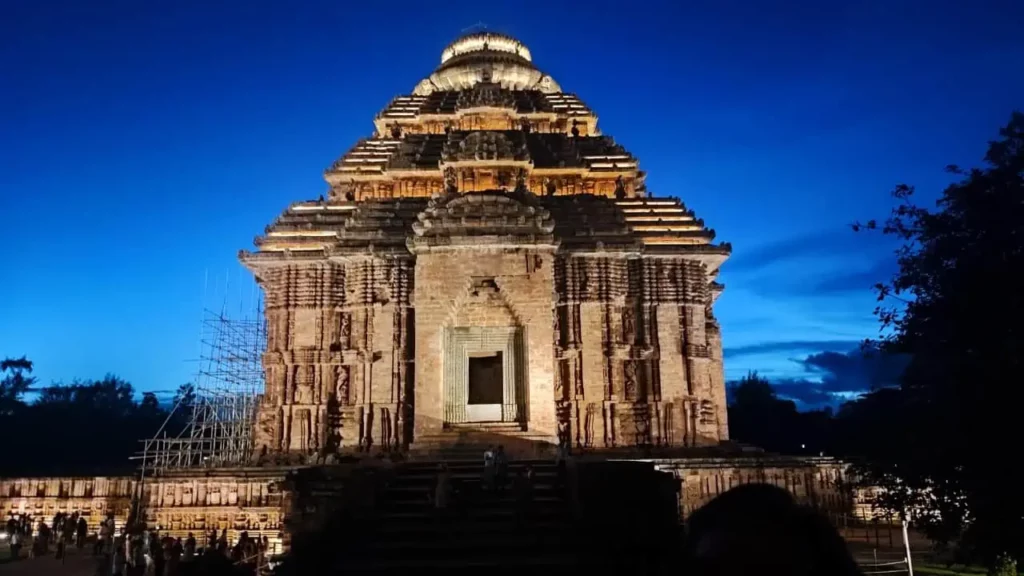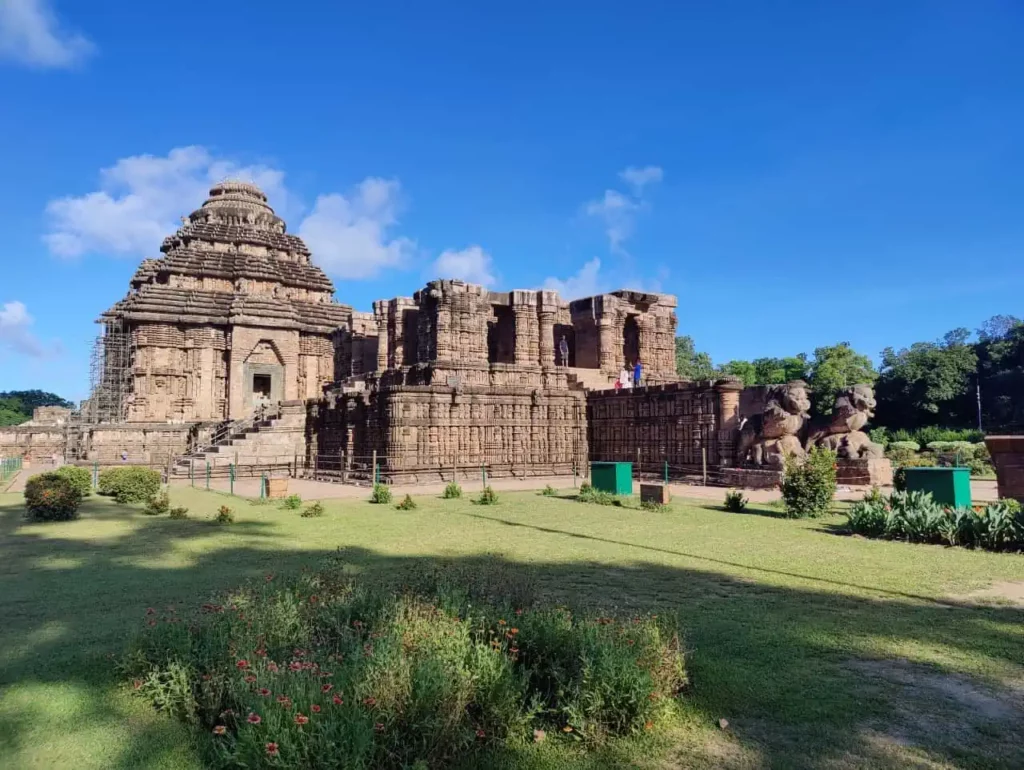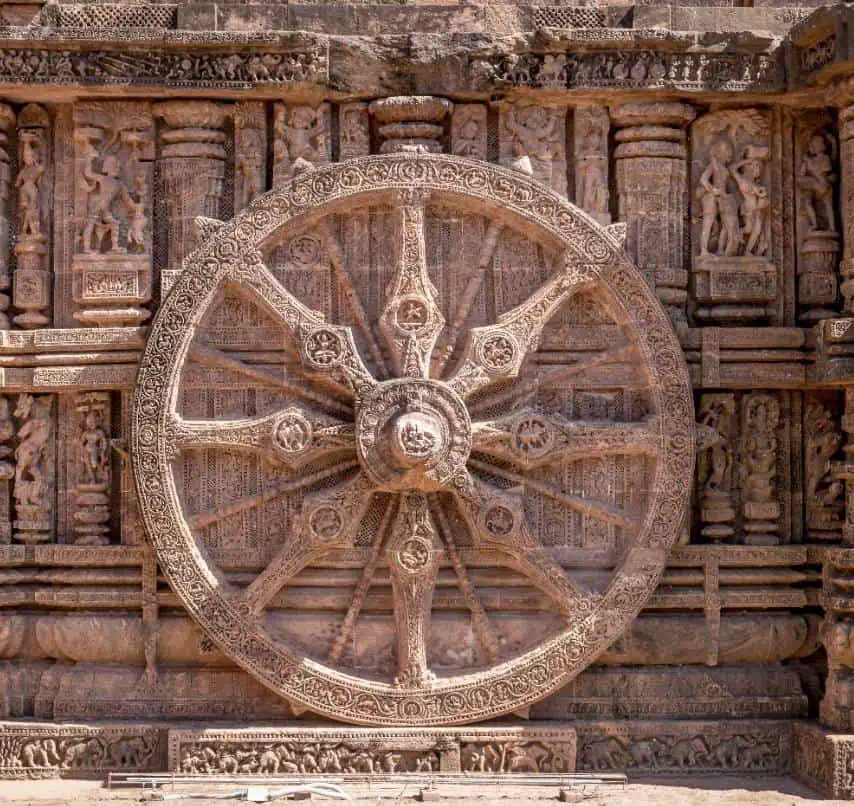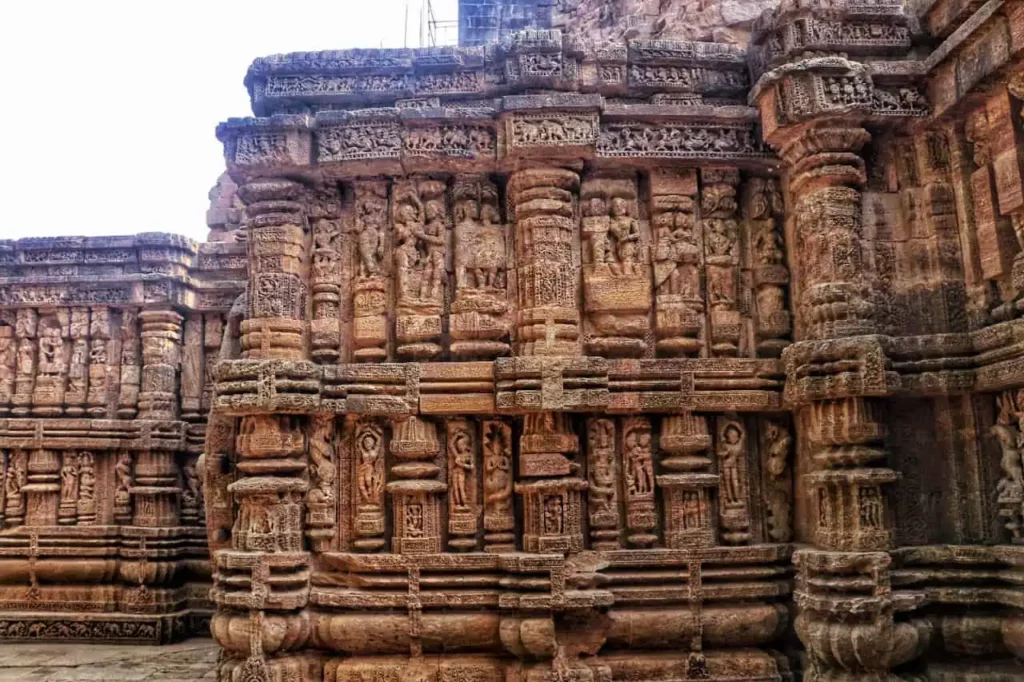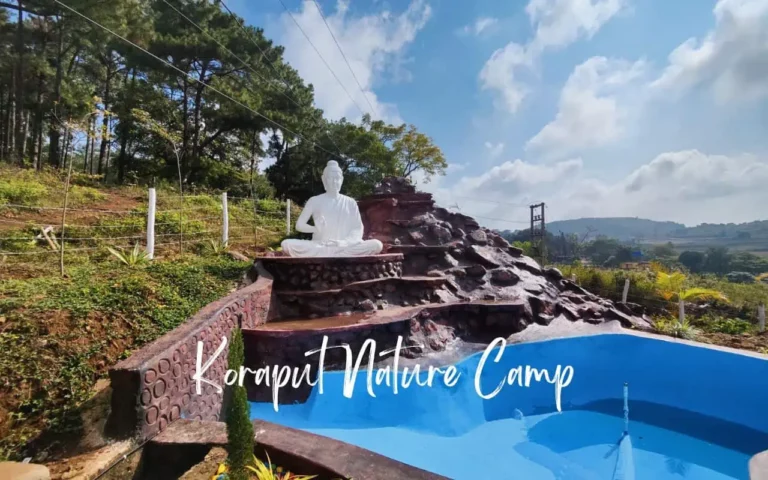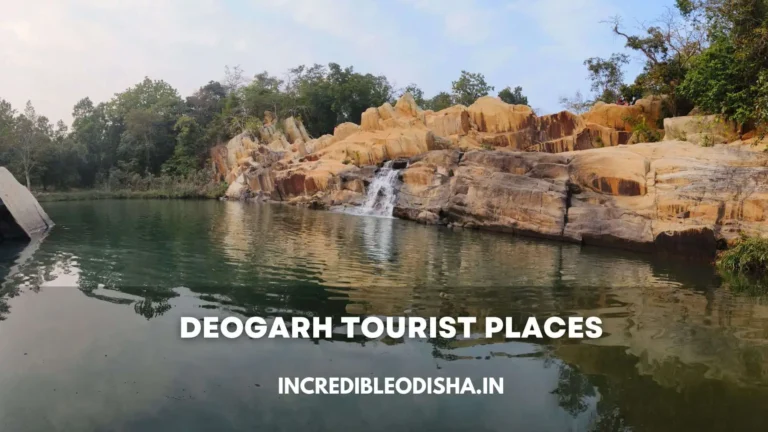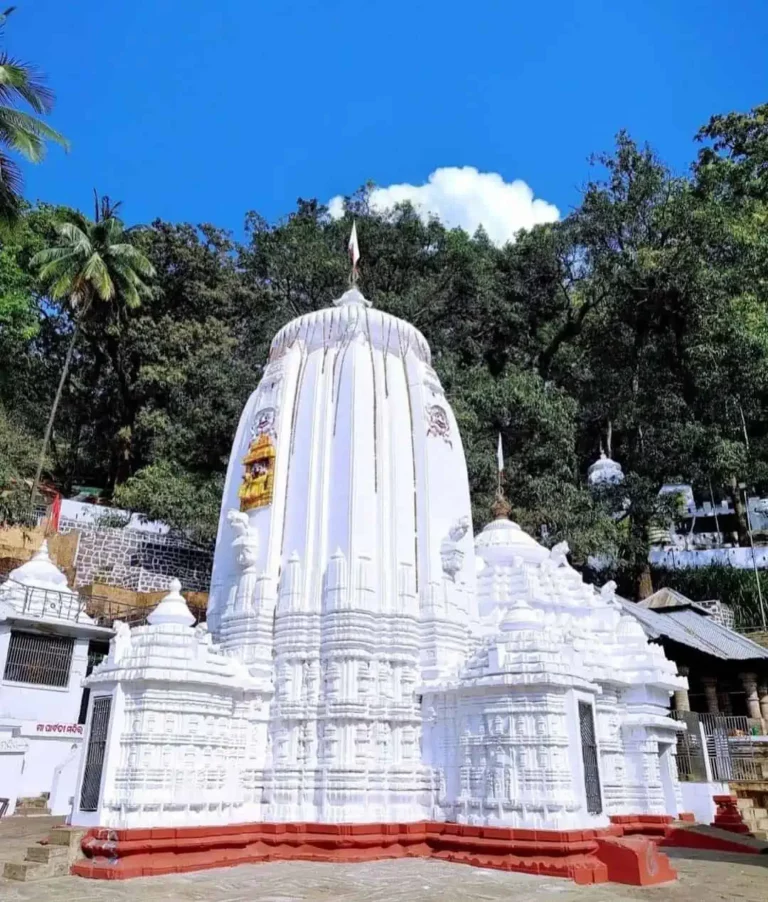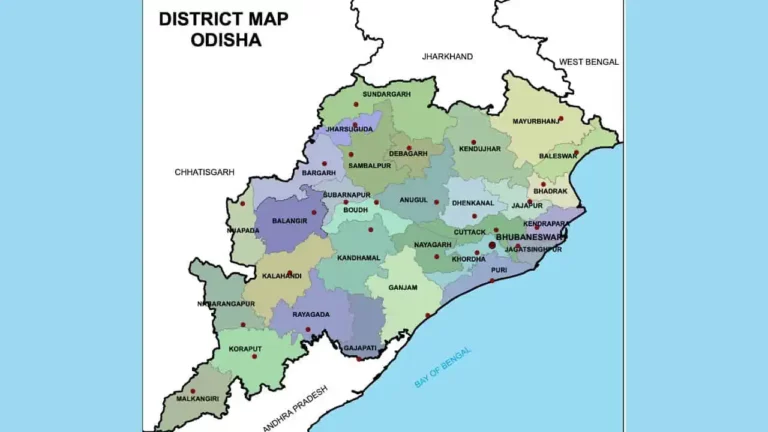Konark Sun Temple History, Architecture, Mystery, Facts, Images, Timings
The Konark Sun Temple is an architectural masterpiece situated 66 kilometers away from Bhubaneswar. Konark Temple has a rich history; it was built by King Narasimhadeva I in the 13th century. Let’s discover the history, architecture, facts, and mysteries around Konark Temple.
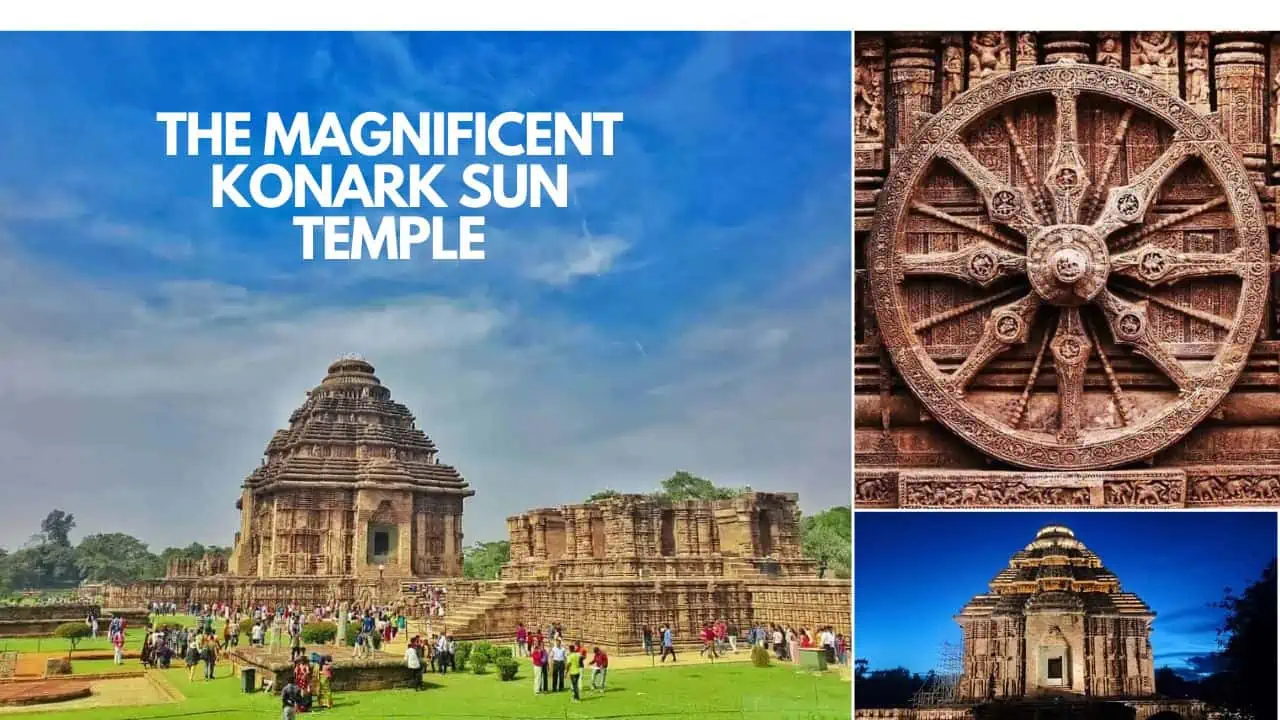
The Konark Sun Temple is a UNESCO World Heritage Site located in the Puri district of Odisha. The temple is dedicated to the Hindu god Surya and is one of the most famous and iconic temples in India.
After Puri Jagannath Temple, Konark Sun Temple is probably the most famous tourist destination in Odisha. The Konark Sun Temple was built in the 13th century by King Narasimhadeva I of the Eastern Ganga Dynasty. The temple is known for its intricate architecture and beautiful sculptures and is considered one of the finest examples of Indian temple architecture.
The Konark Sun Temple is shaped like a chariot and is drawn by seven horses. The temple is adorned with sculptures and carvings depicting various scenes from Hindu mythology and is a treasure trove of ancient art and culture.
The Konark Sun Temple is also known for its astronomical significance. The temple is oriented towards the east, and the sun’s rays fall on the main entrance of the temple at sunrise on the day of the equinox.
Consider reading: 20 Must Visit Best Tourist Places in Odisha
Konark Sun Temple: Opening Times, Ticket Prices, and Parking Facilities
Get detailed information on Kodak temple visit timings, ticket fees, and parking fee details as below:
Konark Sun Temple Darshan Timings
| Days | Parts of the Day | Temple Darshan Timings/Schedule |
|---|---|---|
| Mon to Sun | Temple Opening Time | 06:00 am |
| Mon to Sun | Temple Opening Hours | 06:00 am to 20:00 pm |
| Mon to Sun | Temple Closing Hours | 20:00 pm |
Konark Sun Temple Archaeological Museum Timings
| Days | Opening Hours | Closed on | Entrance Fee | Best time to visit Konark Sun Temple |
|---|---|---|---|---|
| Mon to Sun | 10:00 am to 17:00 pm | Friday | Rs. 5/- per head (Children up to 15 years free) | November to February |
Konark Sun Temple Ticket Prices & Rates below:
Konark Sun Temple Ticket Price
| Days | Indian Citizens & SAARC/BIMSTEC Visitors | Other Visitors |
|---|---|---|
| Mon to Sun | Rs. 10 Per Head | US $ 5 or Rs. 250/- per head (children up to 15 years free) |
There are enough parking spaces available at the place for your parking needs. There is a parking charge.
Cameras, wallets, & electronic gadgets are not allowed inside the temple premises. There are outlets near the temple, where one can deposit their belongings before entering the temple.
Konark Sun Temple photos
Here are some photos of the magnificent Konark Sun Temple:
History of The Konark Sun Temple
The Sun Temple of Konark, constructed in the 13th century, stands as a pinnacle of creative brilliance and architectural mastery. This monumental temple, crafted under the patronage of King Narasimhadeva I of the Ganga dynasty, is a testament to the ingenuity and skill of ancient Indian architects and artisans.
Historical and Architectural Significance:
- Era of Construction: The temple’s construction spanned from 1243 to 1255 A.D., a period marked by the artistic zenith of the Ganga dynasty.
- King Narasimhadeva I’s Vision: The king’s devotion to the Sun God is evident in the temple’s design, symbolizing a celestial chariot dedicated to the deity.
- Team of Artisans: It took the relentless effort of 1200 artisans to bring this architectural vision to life.
Unique Architectural Design:
- Chariot-Like Structure: The temple’s design emulates a grand chariot, complete with 24 intricately carved wheels, each about 10 feet in diameter, and pulled by seven mighty horses.
- Intricate Carvings: Every inch of the temple is adorned with exquisite carvings, showcasing the exceptional craftsmanship of the artisans.
A Testament to Time:
- Despite the ravages of time and its current state of ruin, the Konark Sun Temple continues to awe and inspire. Rabindranath Tagore, a renowned poet, aptly described it: “Here the language of stone transcends the language of man.”
The Konark Sun Temple, in its majestic ruins, remains a wonder of the world, a symbol of India’s rich cultural and architectural heritage.
Consider reading The History of Odisha
The Architecture of The Konark Sun Temple
The Konark Sun Temple, constructed in the 13th century, is a marvel of ancient Indian architecture, artistry, and engineering. Designed in the shape of a magnificent chariot drawn by seven horses, it stands as a tribute to the Sun God and encapsulates a wealth of cultural and scientific knowledge.
Engineering Marvels and Artistic Brilliance:
- Chariot-Inspired Architecture: The temple’s design, resembling a colossal chariot, is a unique blend of religious significance and artistic splendor.
- Intricate Carvings and Sculptures: The temple walls narrate myths and legends associated with the Sun God through detailed carvings and sculptures.
Advanced Scientific Knowledge:
- The Sundial: A prominent feature of the temple, showcasing advanced knowledge in science and astronomy.
- Timekeeping Precision: The sundial’s major and minor spokes divide the day into precise intervals, allowing accurate time measurement.
- Detailed Time Calculation: The sundial’s design, with its beads and spokes, demonstrates a sophisticated understanding of timekeeping.
Cultural and Mythological Depictions:
- Rich Cultural Heritage: The temple’s walls are a canvas of Hindu mythology, depicting battles, love stories, and religious ceremonies.
- Statues of Deities: The temple is adorned with statues of Lord Vishnu and his incarnations, reflecting the deep-rooted spiritual beliefs of the era.
Architectural Durability:
- Interlocking Joint System: The temple’s construction involved an innovative system of interlocking joints, contributing to its longevity and resistance against the ravages of time.
The Konark Sun Temple, in its artistic magnificence and scientific ingenuity, stands as a testament to the advanced skills and cultural richness of ancient Indian civilization.
Significance of The Konark Wheel in The Konark Sun Temple
The stone carvings of the Konark Sun Temple, particularly its iconic wheels, have garnered global acclaim for their intricate artistry and symbolic depth. These wheels, crafted to resemble a colossal chariot, are not just architectural marvels but also bear profound cultural and astronomical significance.
Architectural Splendor:
- Chariot-Like Design: The temple’s base is adorned with 12 pairs of exquisitely carved wheels, simulating a grand chariot drawn by seven mighty horses.
- Dimensions and Details: Each wheel is 9 feet 9 inches in diameter, featuring 8 wider and 8 thinner spokes, amounting to a total of 24 wheels. These wheels are strategically placed around the temple, enhancing its majestic appearance.
Symbolic Interpretations:
- Representation of Time: The 24 wheels are often interpreted as symbolizing the 24 hours of a day, with the 7 horses representing the days of the week, and the 12 pairs of wheels denoting the 12 months of the year. The 8 main spokes are seen as reflecting the prahars (three-hour periods) of a day.
- Wheel of Life: Some view the chariot’s wheels as illustrations of life’s cycle – birth, sustenance, and realization.
- Astrological Connotations: The 12 pairs of wheels are also thought to symbolize the 12 zodiac signs, aligning the temple’s design with celestial movements.
- Connection with Buddhist Symbolism: There is a belief that the Konark Wheel resonates with the Buddhist Dharmachakra, symbolizing the Wheel of Karma or Law.
The Konark Sun Temple’s wheels thus stand as an amalgamation of architectural ingenuity and a deeper understanding of cosmic order, time, and life’s cyclical nature.
Who destroyed Konark Sun Temple?
According to the historians:
The Konark Sun Temple was destroyed by the invading armies of the Mughal Emperor Aurangzeb in the 17th century.
Aurangzeb was a devout Muslim and was opposed to the worship of Hindu gods and goddesses.
He ordered his armies to destroy the Konark Sun Temple and other Hindu temples in the region, as part of his efforts to promote Islam in India.
The Konark Sun Temple was a magnificent and iconic temple, and its destruction was a great loss to Indian art and culture.
However, the temple still stands as a testament to the incredible achievements of the Eastern Ganga Dynasty and continues to attract thousands of visitors from all over the world.
Konark Temple Mystery
As per rumours( which are yet to be verified). Here are some Konark Temple Mysteries:
- Submerged Ancient City Legend: There’s a rumor that the Konark Sun Temple is built atop a submerged ancient city, which supposedly lay under the Bay of Bengal. This city, according to legend, was a bustling metropolis that succumbed to a great flood. The remains of this mythical city are rumored to be hidden beneath the temple.
- Hidden Rooms and Secret Passages: Another unverified claim is that the temple houses secret rooms and passages, believed by some to hold hidden treasures and artifacts from the past. These are thought to have been concealed by temple priests and are yet to be uncovered.
- Temple Built on an Energy Vortex: There is a belief that the temple is situated on a powerful energy vortex, attributed with healing and mystical qualities. This theory suggests that the temple’s location was specifically chosen to harness this energy, making it a site of healing and spiritual significance.
- Haunting Legends: Folklore also suggests that the temple might be haunted by the spirits of ancient priests and soldiers who perished during its destruction. Legends speak of ghostly chants and prayers echoing in the temple’s secluded areas.
It’s important to approach these stories with a critical mind as they remain part of local lore and are not substantiated by historical records or archaeological findings. They do, however, contribute to the temple’s aura of mystery and are a testament to the rich cultural imagination surrounding historic sites like Konark.
Consider reading: Chilika Lake: 7 Things To Do And See, Dolphins, Kalijai Temple, And Garuda Chilika
How to Reach Konark Sun Temple
The Konark Sun Temple is located in the Konark district of Odisha and is well-connected to the rest of the state by road, rail, and air.
Here are some ways to reach the Konark Sun Temple:
- By road: The Konark Sun Temple is located approximately 35 kilometres from Puri, and is well-connected to the rest of the state by a network of roads. Visitors can reach the temple by hiring a taxi or car from Puri, or by taking a bus from Bhubaneswar or other nearby cities.
- By rail: The nearest railway station to the Konark Sun Temple is the Puri Railway Station, which is located about 30 kilometres from the temple. Visitors can take a train from Bhubaneswar, or other nearby cities, and can then hire a taxi or auto-rickshaw from the railway station to reach the temple.
- By air: The nearest airport to the Konark Sun Temple is the Biju Patnaik International Airport in Bhubaneswar, which is located approximately 60 kilometres from the temple. Visitors can take a flight to Bhubaneswar, and can then hire a taxi or car from the airport to reach the temple.
On the seaside drive road, Konark is 35 kilometres (km) from Puri and 65 kilometres (km) from Bhubaneswar through Pipili (about two hours). Good all-weather motorable highways connect Konark.
There are frequent bus connections between Puri and Bhubaneswar. In addition to public transportation, taxis and private tourist bus services are also offered from Puri and Bhubaneswar. Near the Konark temple, auto and cycle rickshaws are accessible for internal transportation.
On your route to Konark Temple, if you’re travelling by road from Bhubaneswar, you can stop at Pipili (famous for its applique work).
You can stop at Beleswar (Lord Shiva Temple), Balighai (Sea Beach), Ramachandi (Temple & Sea Beach), and Chandrabhaga Beach on your trip from Puri if you’re travelling by car (Konark Sea Beach).
A popular way to reach Konark Temple from Puri is to hire an autorickshaw. Puri to Konark auto fare may be around 500–700 rupees, depending on your bargaining skills. There are plenty of autorickshaws, taxis, and local buses that run between Puri and Konark on a daily basis.
Distance to Konark Sun Temple
| S.No | Cities/Railway Stations/Airport | Distance (in Kms) |
|---|---|---|
| 1 | Distance between Bhubaneswar Airport and Konark Sun Temple | 63 Kms |
| 2 | Distance between Puri Railway Station and Konark Sun Temple | 35 Kms |
| 3 | Distance Between Bhubaneswar Railway Station and Konark Sun Temple | 62 Kms |
| 4 | Distance between Jagannath Puri Temple and Konark Sun Temple | 151 Kms |
| 5 | Distance between Chilika Lake and Konark Sun Temple | 65 Kms |
| 6 | Distance from Lingaraj Temple to Konark Sun Temple | 59 Kms |
| 7 | Distance Between Angul and Konark Sun Temple | 192 Kms |
| 8 | Distance Between Cuttack and Konark Sun Temple | 81 Kms |
| 9 | Distance Between Kolkata and Konark Sun Temple | 128 Kms |
Consider reading: Top 10 Best Places To Visit And Things To Do In Puri
The Famous Konark Marine Drive Road
The Konark Marine Drive Road is a scenic road located in the Puri district of Odisha. The road is a popular destination for tourists and locals alike and offers stunning views of the Bay of Bengal and the surrounding landscape.
The Konark Marine Drive Road is a 12-kilometer-long road that runs along the coast of the Bay of Bengal. The road is bordered by lush green forests and the sandy shores of the bay and offers breathtaking views of the sea and the surrounding countryside.
The Konark Marine Drive Road is a popular destination for tourists, who come to enjoy the fresh sea air and the picturesque scenery. The road is also a popular spot for picnics and is a favorite among locals who come to spend time with their families and friends.
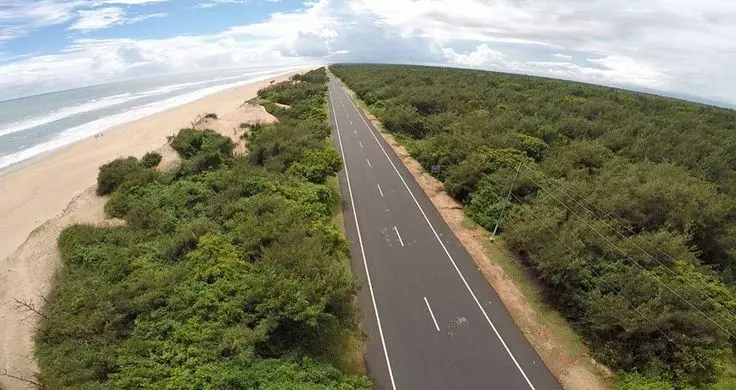
The Konark Marine Drive Road is also home to several important landmarks and tourist attractions, including the Konark Sun Temple, the Chandrabhaga Beach, and the Ramchandi Temple. Visitors can explore these attractions and learn more about the history and culture of the region.
Consider reading: Best Eco Retreat In Odisha: Konark, Daringbadi, Satkosia, Bhitarkanika, Hirakud, Pati Sonapur And Putsil
Closing Thoughts on Konark Sun Temple
In conclusion, the grandeur and intricacy of the Konark Sun Temple remain an exquisite testament to India’s rich heritage.
This iconic landmark is not just an architectural marvel but a journey back in time, offering a glimpse into an ancient civilization’s knowledge and sophistication.
If you’re keen on discovering India’s cultural depth and historical prowess, a visit to this awe-inspiring monument should undoubtedly be on your list.
This treasure of Odisha truly stands as a shining beacon of the Sun God’s grace, a sight to behold for everyone.
Make your journey memorable by soaking in the beauty of the Konark Sun Temple, an emblem of India’s architectural genius that still resonates with the echoes of the past.
FAQs About Konark Sun Temple
Why is Konark Sun Temple so famous?
The Konark Sun Temple is famous for its architectural grandeur and intricate artistry, reflecting the 13th-century Orissan kingdom’s mastery. Renowned as a majestic embodiment of the Sun God, Surya, it holds a vital place in the spiritual history, showcasing the ancient cult of Surya and its connection to Brahmanism and Tantric practices.
Which God is the Sun Temple of Konark for?
The Sun Temple of Konark is dedicated to the Hindu deity Surya, the Sun God. This historic temple showcases magnificent stone-carved chariots and sculptures, celebrating Surya’s celestial significance.
What is the secret of the Konark Sun Temple?
The Konark Sun Temple’s secret lies in its ancient magnetic marvel. Historically, it’s believed that the temple’s architects ingeniously integrated powerful magnets throughout its structure, which reportedly caused its central deity to levitate. This architectural finesse not only intrigues visitors but showcases the skilled craftsmanship of India’s past artisans.
What is the special feature of Konark Sun Temple?
Konark Sun Temple’s special feature is its iconic chariot shape, complete with intricately carved stone wheels and horses, embodying the Kalinga architectural style. This UNESCO World Heritage site stands out for its detailed stonework, illustrating Hindu mythological scenes, attracting historians and tourists globally.
